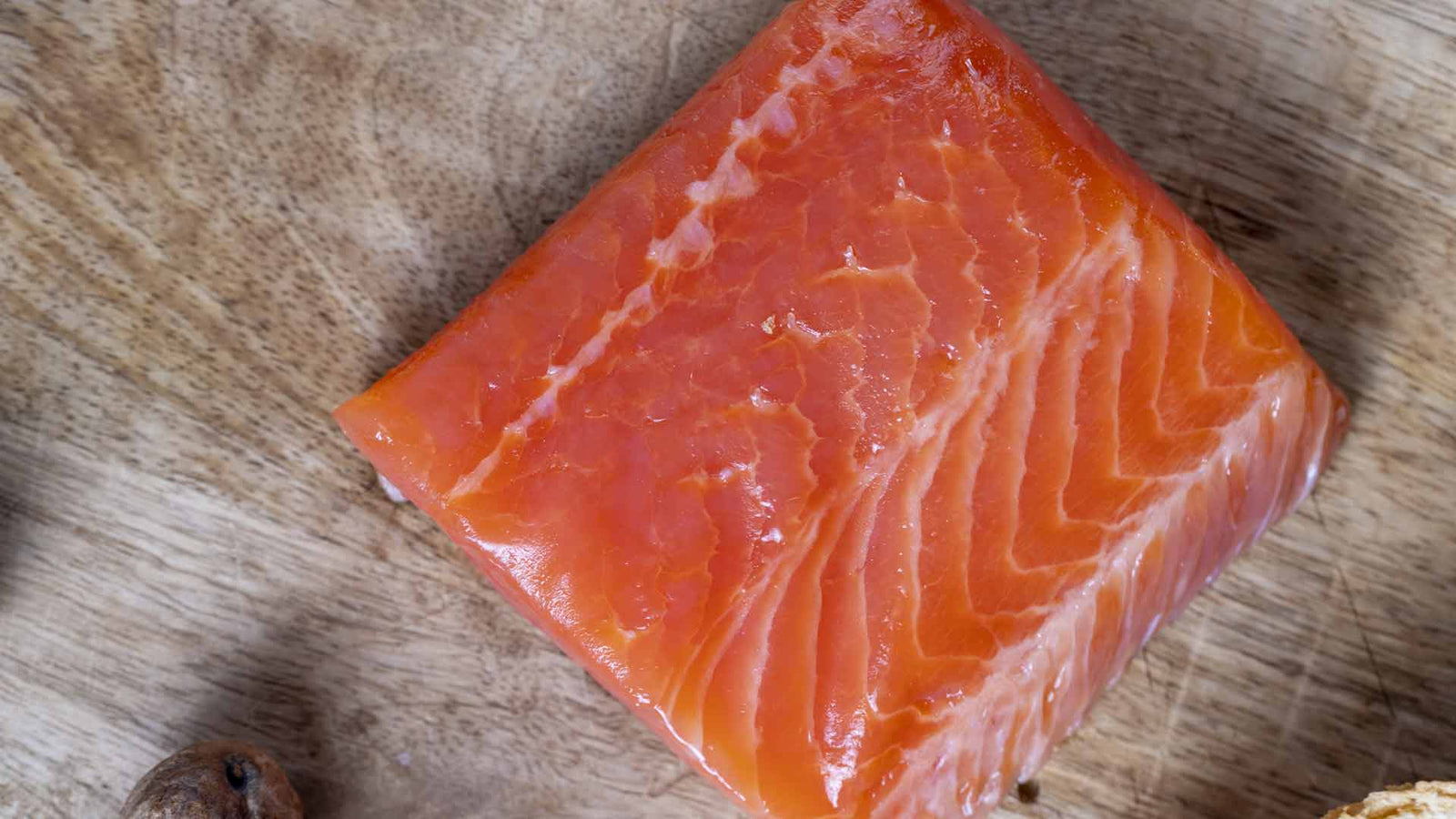
Flash-Frozen is the New Fresh: Much of our seafood comes to you frozen, which means you can enjoy seasonally harvested Alaskan Salmon or Halibut any time of the year. Freezing fish rapidly and within hours of catch locks in flavor and freshness, giving us a straight-from-the-sea taste. Major advances in rapid-freeze technologies mean seafood can be frozen solid in a matter of minutes, which minimizes damage to cell walls, preserving taste, texture, and moisture levels. The process of freezing seafood has evolved to the point where frozen fish is comparable to—if not better than—fresh. In fact, consumer taste tests conducted byOregon State University consistently put frozen seafood on top.
Safely Thawing Frozen Seafood
We recommend thawing your fish 24 hours prior to preparing it for the best results. Thaw unopened packages in the refrigerator. Remove the fish from the package, rinse with cold water, and pat dry.

When will your fish be ready?
Wild salmon can be a delightful dish when prepared properly, but nothing can deplete its natural flavor and nutrition faster than overcooking. Remember that the fish will continue to cook for a few minutes after you remove it from the heat source. To ensure accuracy, use an instant-read thermometer. Fish is medium-rare when the internal temperature reaches 125°F and well done at 145°F.
Rubs and marinades
- Thaw the fish completely, then rinse, pat dry, and cover with your favorite marinade or dry rub.
- To avoid scorching, apply barbeque, teriyaki, or fruit sauces right before the fish is done cooking.
- Brush both sides with olive oil blended with ourWild Alaskan Salmon Marinade or use any herbs of your choosing once thawed.
- Cook immediately or refrigerate in a zip-lock bag for up to 12 hours.
- Various Cooking Methods
Grilling
- Clean and heat the grill. When hot, lightly oil the grate.
- Place the marinated fish, skin side up, directly over a heat source, once partially cooked flip and repeat.
- Check for grill marks after 2-3 minutes by gently lifting the fish. Slide a spatula under the fish when grill marks appear, flip, and cook the other side. If desired, rotate the tool 90 degrees to create crosshatch marks.
- Check-in 2-3 minutes. Cook until the mixture is completely opaque.
Grilling on planks of wood
Native Americans pioneered the art of grilling fish and game on wood planks in the Pacific Northwest, which preserves moisture and imparts wonderfully subtle wood notes to grilled food.
- Preheat the grill to medium-high.
- Preheat the grill for 5 minutes or until the bottom of the plank begins to darken.
- Flip the plank over carefully and place salmon or other fish on top.
- Cooking times will vary depending on the grill's heat and the fish's thickness, but they should be between 5 and 10 minutes or until the salmon is opaque throughout.
Roasting
- Preheat the oven to 250°F.
- Coat thewild Alaskan fish in the marinade or seasoning of your choice.
- Place the fish in a roasting dish and bake for 20 minutes on the center rack of the oven.
- Check the interior by flaking open the thickest section with a fork. Cook until the mixture is completely opaque.
Baking
- Heat the oven to 350°F.
- Cook the marinated fish in a baking dish for 8-10 minutes.
- Time will vary depending on the thickness of the chunk.
- Remove the fish from the oven when it begins to flake easily with a fork. Cook until the fish is completely opaque.
Steaming
- Bring about 1" of water to a boil in a pot with a wire steamer basket or veggie steamer.
- Turn off the heat and insert the steamer basket in the pot.
- To keep shellfish from sticking, line a steamer with lettuce, onions, herbs, or citrus.
- Include seafood.
- Bring the liquid back to a boil and cover loosely. Cook until the mixture is completely opaque.
Sautéing
- Preheat an oiled skillet to medium-high heat.
- Place the marinated/seasoned seafood on top, skin side up.
- Shake the pan immediately after adding the seafood, then set aside until the desired color emerges.
- Cook until the fish is opaque throughout.
Broiling
- Heat the oven to broil.
- 1 tablespoon olive oil in a medium heat-resistant skillet
- Place the salmon skin side down on a plate and season with olive oil.
- Broil for 8 minutes per inch of thickness in the oven.
- Cook until the mixture is completely opaque.
Now that you know how to prepare the wild Alaskan fish for the cooking of your choice. It is time to add the final ingredient to your choice of cooking method. Pick your favorite Alaskan delicacy and get free local delivery.

